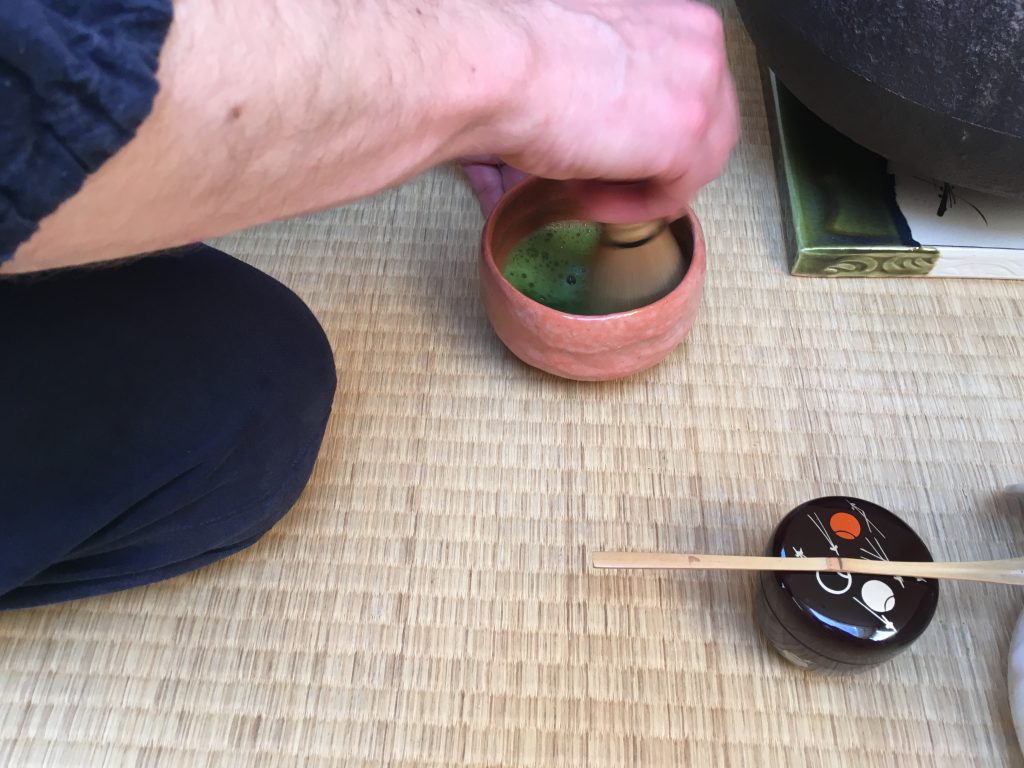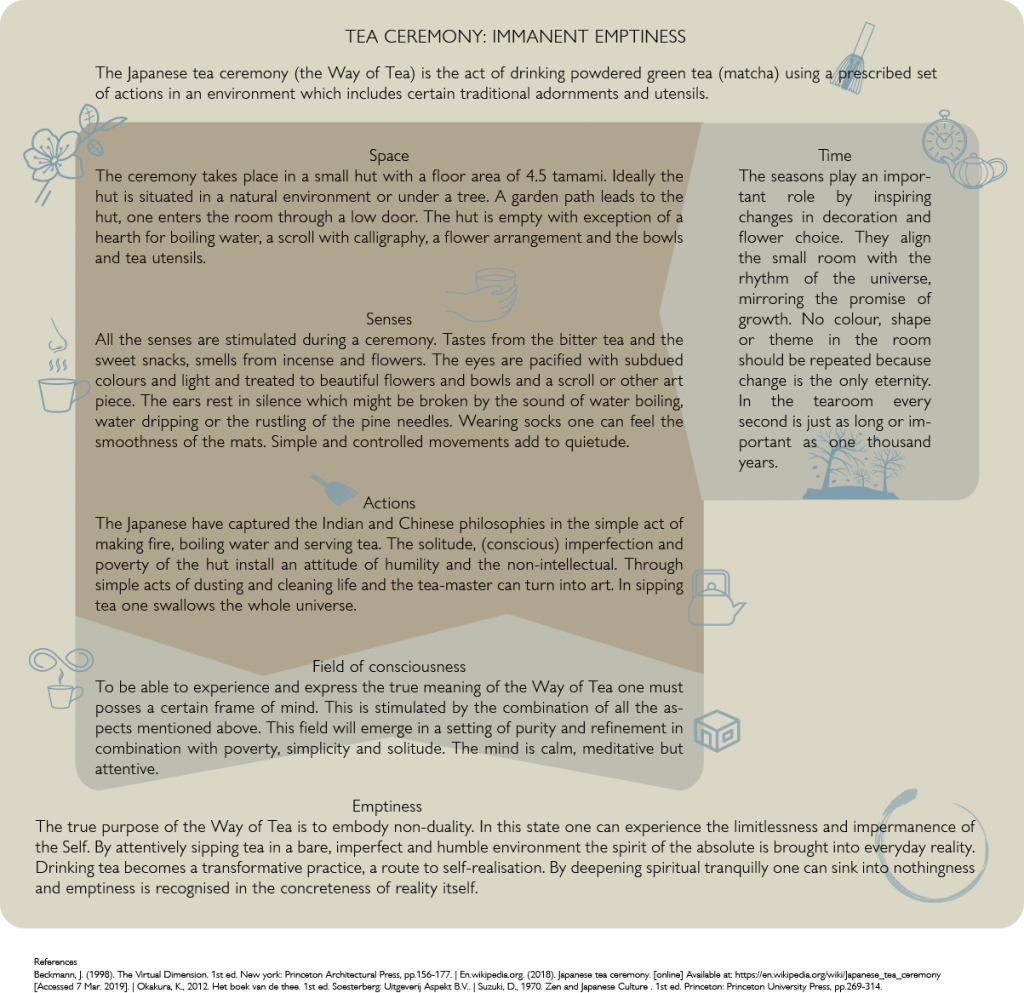Sparking joy with tea

I must have subscribed to the Marie Kondo mailing list years ago when I followed the KonMari method to bring order to my house. After not receiving any newsletters for years I started receiving them again since some time. Not all topics are of interest but I was really triggered by a link to her blog entitled “The Art of Tea”. Has “the way of tea” also gone mainstream, like Zen and mindfulness?
I have been studying the Japanese tea ceremony for the past six months and have drawn knowledge from different sources. In this post I want to explain my fascination and gather what I learned in one location. Finally I would like to introduce how I intend to use this traditional ceremony as a basis for a transcendent technology experience.
Everyday transcendence
So what sparked my interest in the tea ceremony? For years I have been exploring ways to make spirituality and its positive effects more accessible by using technology. At the start of my master, September last, I set my stakes high: I want to create a prototype which not only makes users mindful and quiet. I want them to experience true insight. To experience a core concept in Buddhist teachings: emptiness. This is quite a complex term but it the main hallmark of emptiness is that all things (including ourselves) are without a fixed core. Everything is interconnected, interdependent and subject to constant change.
Gaining this type of wisdom and insight usually takes decades (if not lives). But I want to make wisdom easy and turn everything around us into an interface to wisdom. Imagine that interacting with everyday objects while performing simple tasks could make us wise.
While researching the topic of emptiness I came across and article called “Virtual Reality and the Tea Ceremony”. When I read: “…the tea ceremony functions as an interface, a window, between daily human business and the experience of fresh, spontaneous nature” I realised there was a lot more to explore.
Learning from literature
The Book of Tea by Kakuzō Okakura is a classic from 1906 and an obvious place to start. Okakura firmly places the way of tea in the Taoist and Zen traditions: “All our great tea-masters were students of Zen and attempted to introduce the spirit of Zennism into the actualities of life.” From this book it becomes very clear that the tea ceremony was a means to bring spirituality into everyday life.
In chapters 8 and 9 from his book Zen and Japanese Culture D. T. Suzuki explains the way in which the tea ceremony by stimulating the senses in a specific way changes our state of mind to grasp the philosophy of Emptiness.
From my readings I have created an infographic. For me this was a way to discover and visualise the essence of the ceremony and the way various aspects interact.

Drinking matcha
I was given the name of someone “who knows about the tea ceremony”. This turned out to be the fully ordained tea master Michel Decré who happens to also have an interest in art and technology. Before we started talking he took me out to this tea garden with tea house where he preformed the ceremony. What has stayed with me most was the peaceful intensity of the experience. It makes the whole world come to life.
Magic tea as an interface to wisdom
In Kondo’s blog we read: “Marie regularly prepares ceremonial matcha as a way to find calm and enjoy a moment of solitude.” She explains how to have a sober tea ceremony at home and take a little time to care for yourself. I suppose for lay persons this is a very positive result. But it only scratches the surface. To deepen our insight into who we are in this moment of solitude we need to be shaken into Emptiness. Realise that we are not separate from what we see around us but interconnected, that we are not a stable form but constantly changing and evolving. We might realise that the water we are using contains our own tears or even the tears of a whale, that the cup we drink from has our pulse. That when we whisk our tea we are causing a hurricane somewhere on the planet. That after we finish this cup we will never be the same again.
In my interactive installation Magic Tea I want to evoke these kind of experiences using a network of (bio-metric) sensors and media which will stimulate all the senses and create an embodied experience.
Drinking tea will become an activity that is connected to the whole universe. By creating and drinking tea you are transformed and connected to everything that lives and has lived. When you look deeply for a long time you may find that this is so. With the help of technology everyone may experience this plainly in an instant.
References
Beckmann, J., 1998. The Virtual Dimension. 1st ed. New york: Princeton Architectural Press, pp.156-177. (Heim, M. Virtual Reality and the Tea Ceremony.)
En.wikipedia.org. (2018). Japanese tea ceremony. [online] Available at: https://en.wikipedia.org/wiki/Japanese_tea_ceremony [Accessed 7 Mar. 2019].
Okakura, K., 2012. Het boek van de thee. 1st ed. Soesterberg: Uitgeverij Aspekt B.V..
Suzuki, D., 1970. Zen and Japanese Culture . 1st ed. Princeton: Princeton University Press, pp.269-314.